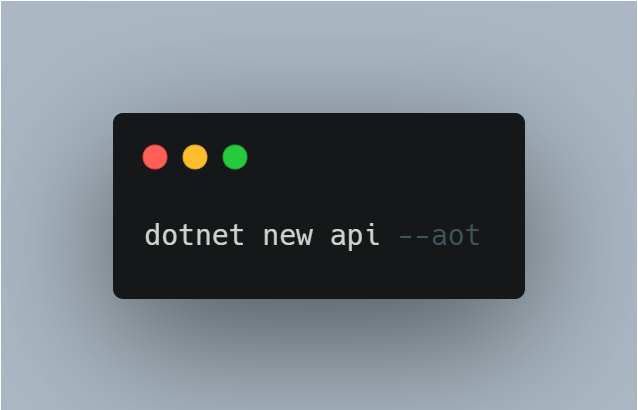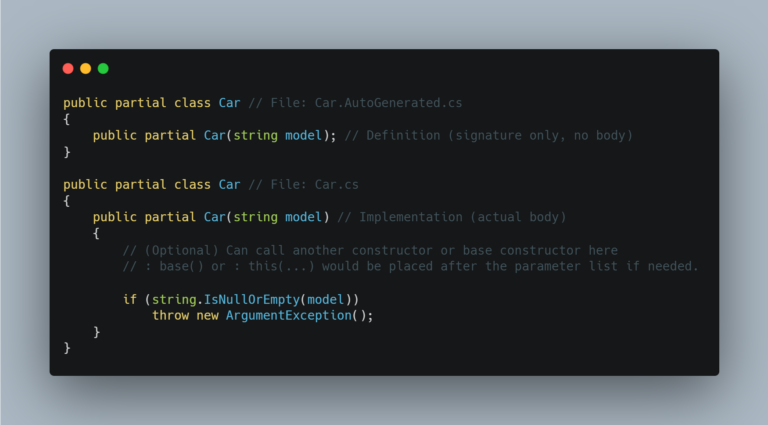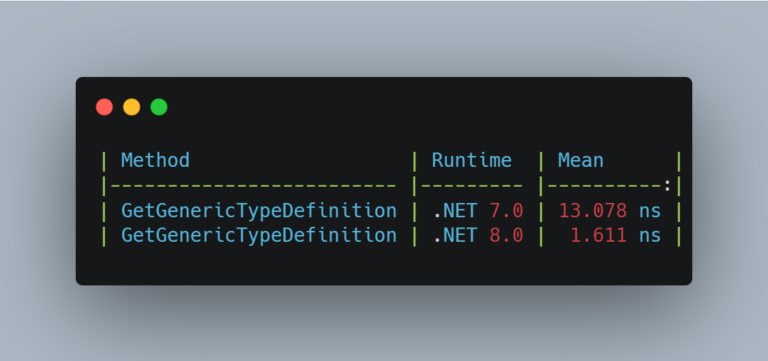dotnet new api -aot: ‘-aot’ is not a valid option
The correct syntax for generating a project with AOT is --aot (with 2 hyphens). In this particular case, the correct command would be:
dotnet new api --aotCode language: Bash (bash)
The correct syntax for generating a project with AOT is --aot (with 2 hyphens). In this particular case, the correct command would be:
dotnet new api --aotCode language: Bash (bash)
C# 14 introduces a new capability to declare instance constructors and events as partial members. This means you can split a constructor or event definition across two parts of a partial class, similar to how C# has long allowed partial methods and partial properties. This means that, one part of a partial class can declare…
Unsafe accessors can be used to access private members of a class, just like you would with reflection. And the same can be said about changing the value of a readonly field. Let’s assume the following class: Let’s say that for some reason you want to change the value of that read-only field. You could…

.NET 8 brings some neat performance for existing APIs that handle type information. One such API that has seen a significant improvement is GetGenericTypeDefinition. In my benchmarks, the .NET 8 implementation is almost 10 times faster compared to the .NET 7 version. You can run this benchmark yourself if you’d like using BenchmarkDotNet: Or if…
While trying out C# 13 features, it’s possible you might come across errors similar to these: Feature is not available in C# 12.0. Please use language version 13.0 or later. or Error CS8652: The feature ‘<feature name>’ is currently in Preview and unsupported. To use Preview features, use the ‘preview’ language version. There are two…
This article will guide you through building your first .NET Aspire application. If you want an overview of .NET Aspire and what it brings to the table, check out our What is .NET Aspire article. Prerequisites There are a few things you need to have ready before you get started with .NET Aspire: If you…
Starting with .NET 8, several new methods have been added to the JsonNode class to help with the deep cloning of nodes and checking whether they are equal or not. The DeepClone() method will create and return a deep clone of the current node and all of its descendants. On the other hand, DeepEquals() will…